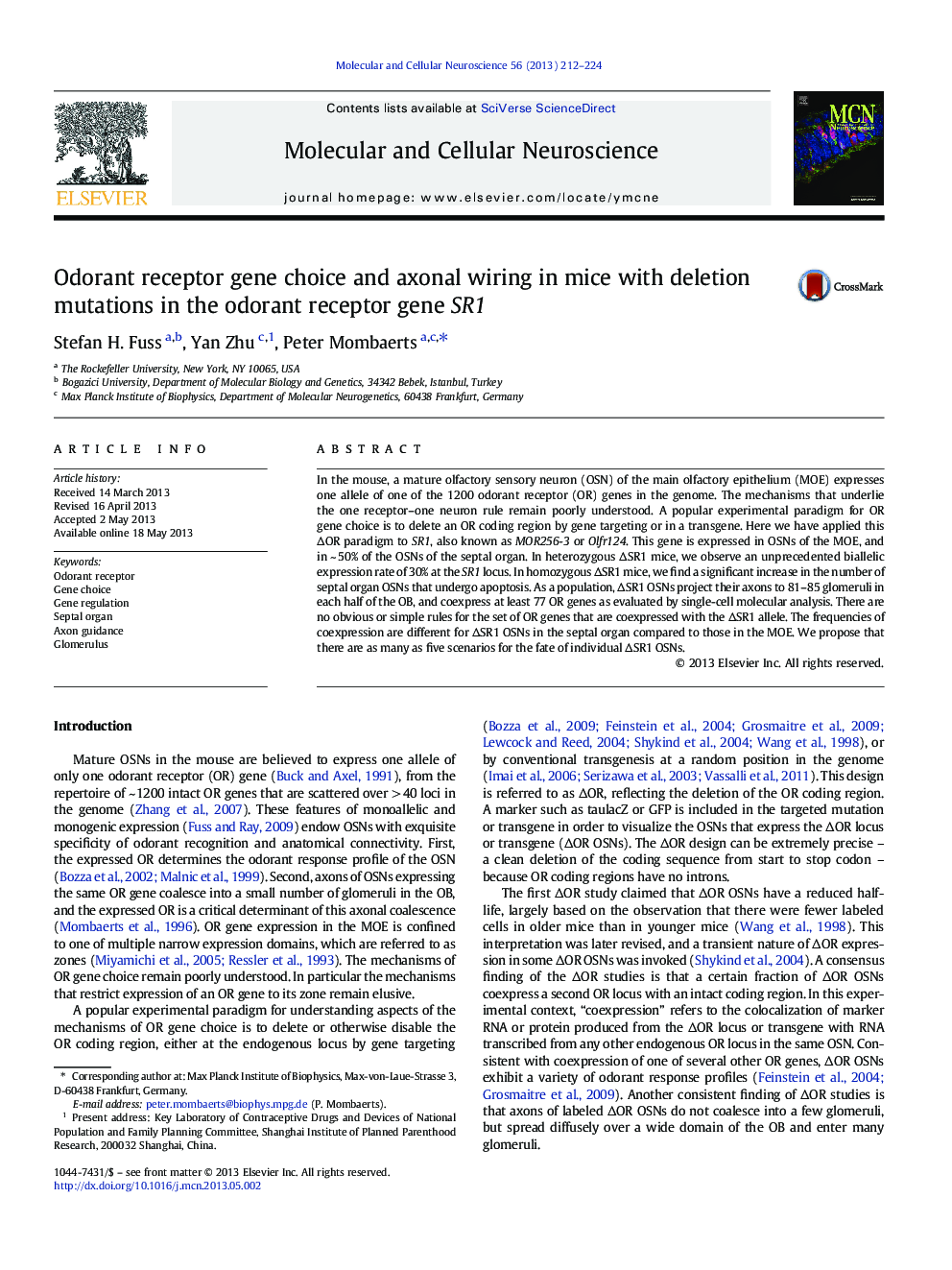| Article ID | Journal | Published Year | Pages | File Type |
|---|---|---|---|---|
| 8478660 | Molecular and Cellular Neuroscience | 2013 | 13 Pages |
Abstract
In the mouse, a mature olfactory sensory neuron (OSN) of the main olfactory epithelium (MOE) expresses one allele of one of the 1200 odorant receptor (OR) genes in the genome. The mechanisms that underlie the one receptor-one neuron rule remain poorly understood. A popular experimental paradigm for OR gene choice is to delete an OR coding region by gene targeting or in a transgene. Here we have applied this âOR paradigm to SR1, also known as MOR256-3 or Olfr124. This gene is expressed in OSNs of the MOE, and in ~Â 50% of the OSNs of the septal organ. In heterozygous âSR1 mice, we observe an unprecedented biallelic expression rate of 30% at the SR1 locus. In homozygous âSR1 mice, we find a significant increase in the number of septal organ OSNs that undergo apoptosis. As a population, âSR1 OSNs project their axons to 81-85 glomeruli in each half of the OB, and coexpress at least 77 OR genes as evaluated by single-cell molecular analysis. There are no obvious or simple rules for the set of OR genes that are coexpressed with the âSR1 allele. The frequencies of coexpression are different for âSR1 OSNs in the septal organ compared to those in the MOE. We propose that there are as many as five scenarios for the fate of individual âSR1 OSNs.
Related Topics
Life Sciences
Biochemistry, Genetics and Molecular Biology
Cell Biology
Authors
Stefan H. Fuss, Yan Zhu, Peter Mombaerts,
